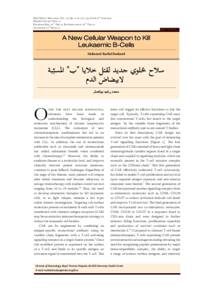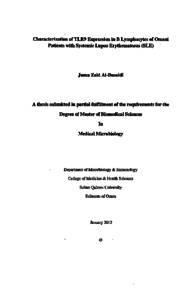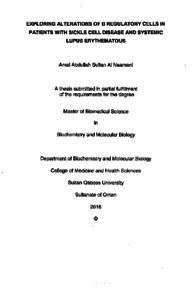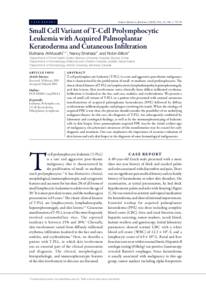Document
A New cellular weapon to Kill leukaemic B-cells.
Other titles
سلاح خُلوي جديد لقتل خلايا "ب" المسبّبة لابيضاض الدم
Publisher
College of Medicine, Sultan Qaboos University.
Gregorian
2012-05
Language
English
English abstract
Over the past decade substantial advances have been made in understanding the biological and molecular mechanisms of chronic lymphocytic leukaemia (CLL). The evaluation of new chemotherapeutic combinations has led to an increase in the rate of complete remission in patients with CLL. In addition, the use of monoclonal antibodies such as rituximab and alemtuzumab has added substantial benefit when combined with chemotherapy. However, the ability to eradicate disease at a molecular level, and improve clinically relevant patient outcome measures, continue to pose difficult challenges. Regardless of the stage of the disease, most patients will relapse after initial treatment and become refractory to salvage chemotherapy with median overall survival ranging from 10 to 19 months.3,4 Thus, the need to develop alternative therapies to kill leukaemic cells, or to fight relapse, remains a hot topic under intense investigation. Targeting cell-surface molecules present on leukaemic B-cells with T-cells transfected with chimeric antigen receptors (CAR) may be an attractive immunotherapeutic strategy to reduce the leukaemic cell burden.
Member of
Resource URL
Category
Journal articles




